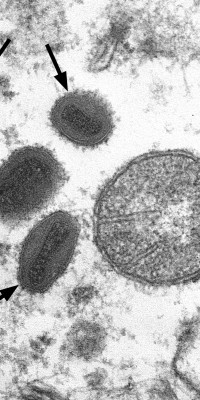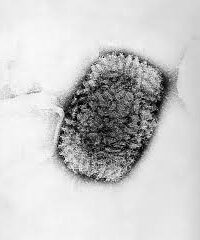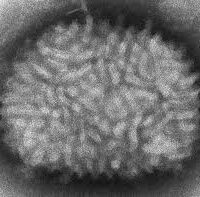Vaccinia virus (VACV) has been used more extensively for human immunization than any other vaccine. It is best known as the vaccination for the smallpox virus and is credited with the eradication of the disease. Uncontrolled, VACV can cause a serious illness characterized by the eruption of small pock-like lesions throughout the skin and internal organs. Vaccinations using VACV have been on the rise since 2003 when it emerged that the smallpox virus could be employed by bioterrorists.
Transmission:
Vaccinia can be spread by touching the vaccination site before it has fully healed or by touching clothing or bandages that have been contaminated with the live virus during vaccination. In this manner, vaccinia can spread to other parts of the body and to other individuals. It cannot be spread through the air. Healthcare workers are chiefly at risk of infection simply due to exposure in medical settings.
Symptoms:
Symptoms arising from infection are similar to smallpox infection, through they are milder. The initial clinical signs of the infection are focal red skin areas, fever, and general symptoms similar to those of a cold. These include:
- Soreness and redness in the vaccination area
- Slightly swollen, sore glands in the armpits
- Mild fever
- Insomnia




